Abstract
The susceptibility of human red blood cells to invasion by Plasmodium falciparum was investigated in microtissue cultures with different populations of erythrocytes containing fetal haemoglobin (HbF). Preferential invasion of HbF-containing erythrocytes was observed with umbilical cord blood. The parasites showed no preference for HbF cells in blood from a subject with hereditary persistence of fetal haemoglobin (HPFH). By contrast, a significant preference for HbA-containing erythrocytes was found with blood from young infants. Further experiments demonstrated that falciparum parasites preferentially invade “young” erythrocytes. This could explain the distribution of parasites found in blood containing HbF, because HbF-containing erythrocytes are “younger” on average in cord blood, “older” in the blood of infants, and of the same average age as HbA-containing cells in HPFH. We concluded that the susceptibility of human erythrocytes to invasion by P. falciparum is not correlated with the presence of HbF, but that aging of red cells in vivo decreases their susceptibility to invasion. Semi-quantitative measurements were made of parasite growth in cells containing HbA or HbF. The growth of individual parasites in cells containing HbF was significantly retarded. This might confer a selective advantage on individuals with thalassaemia and sickle cell trait, in which HbF levels are raised in early life.
Full text
PDF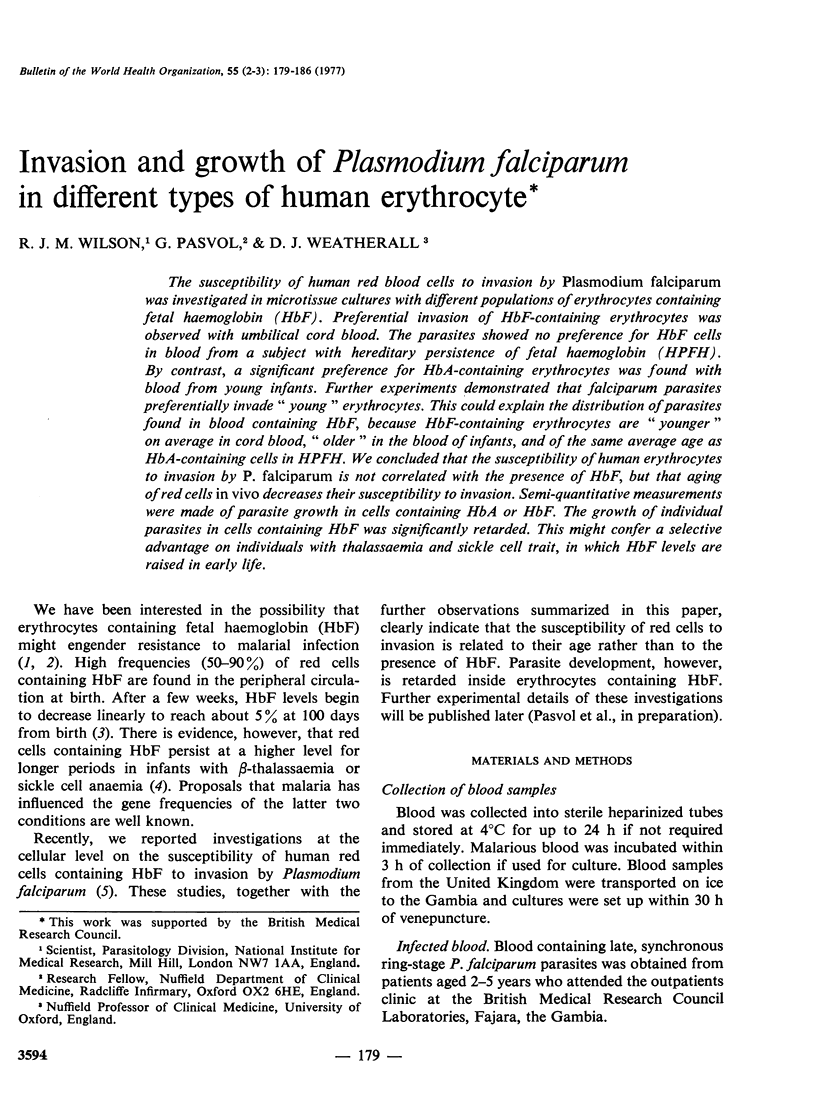
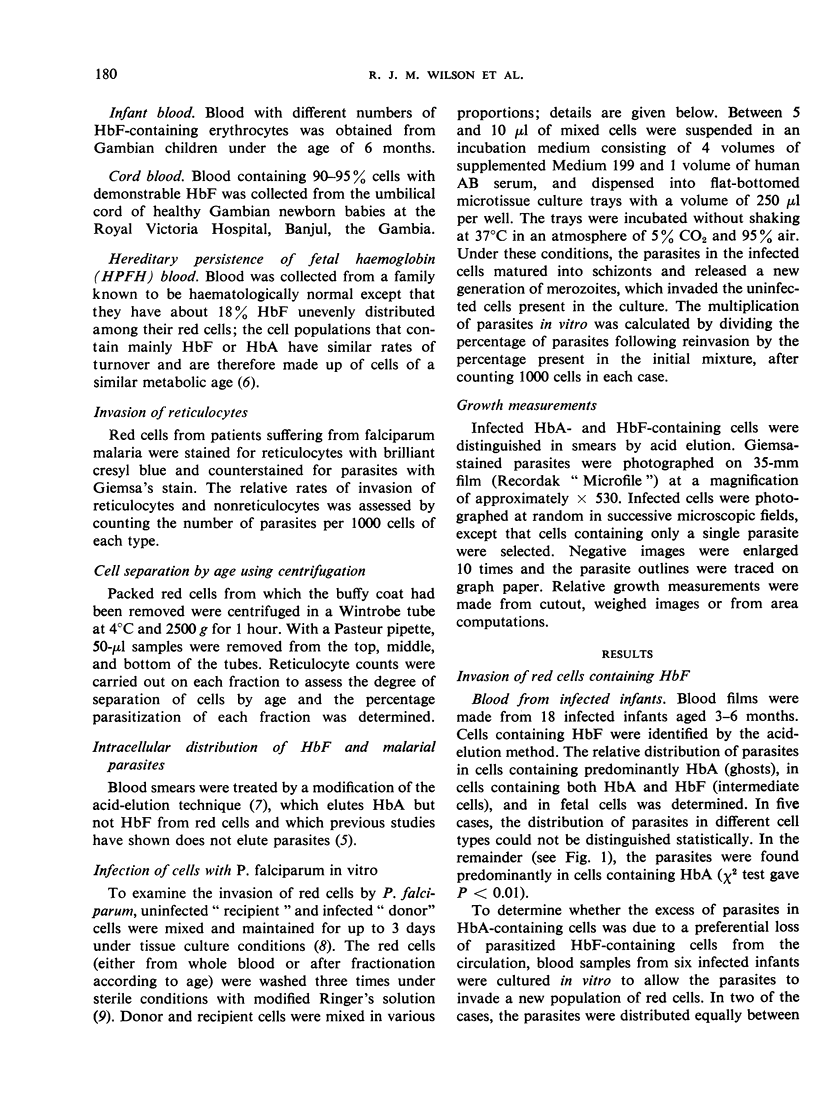
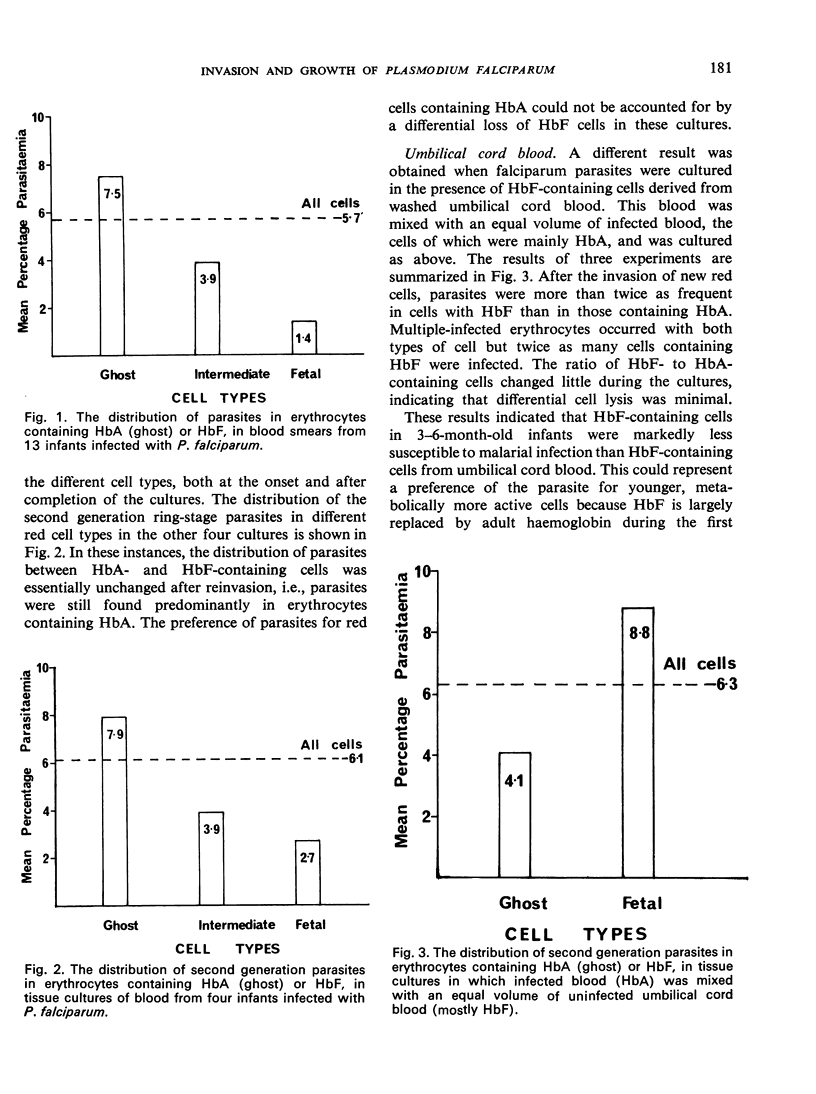
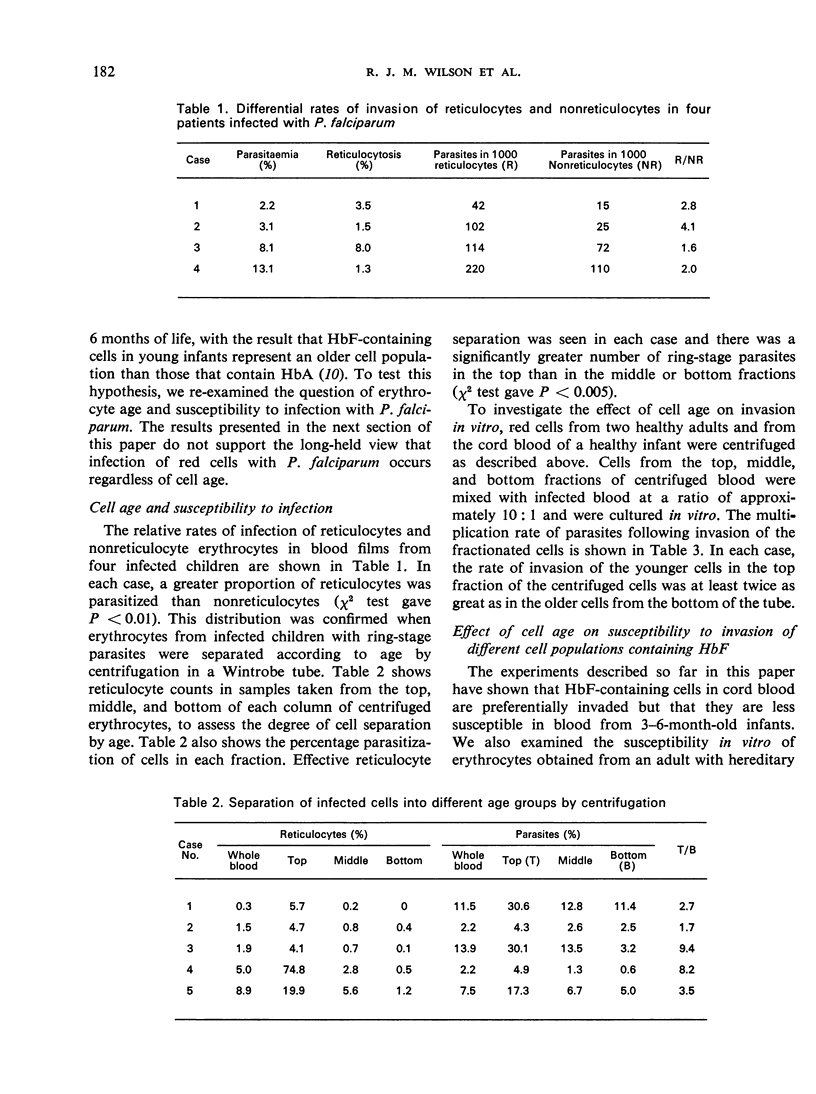
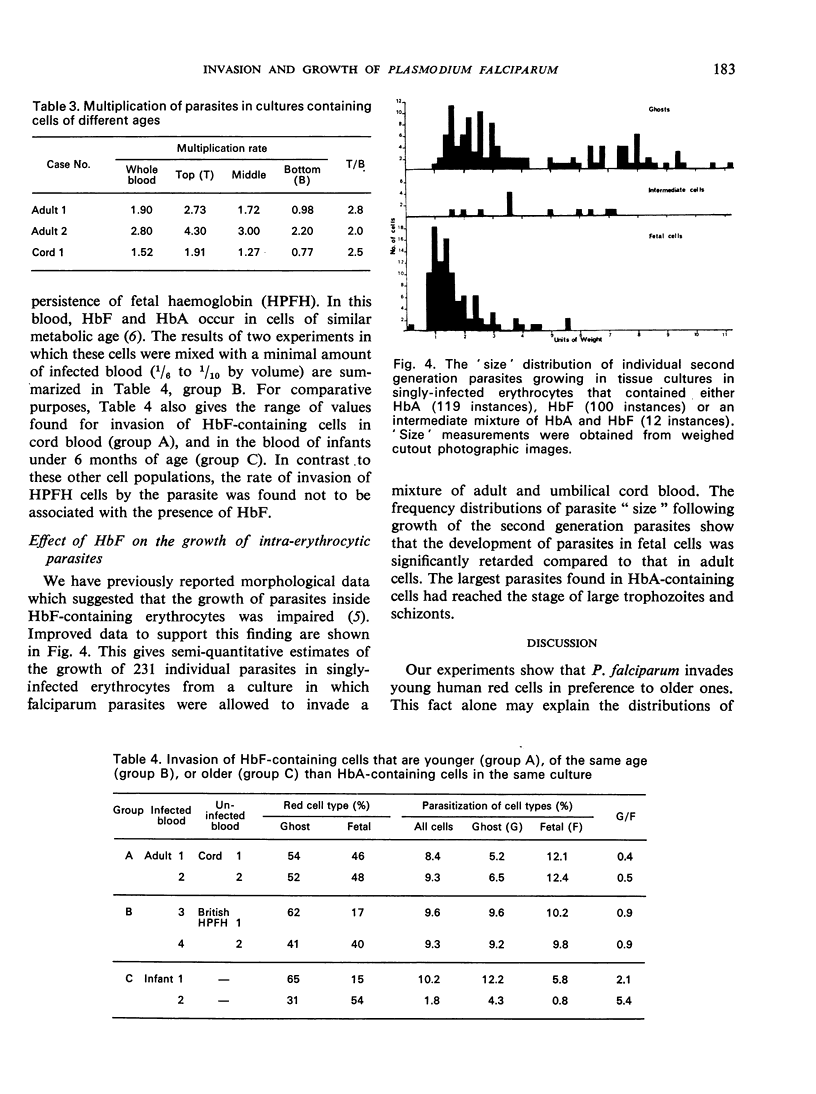

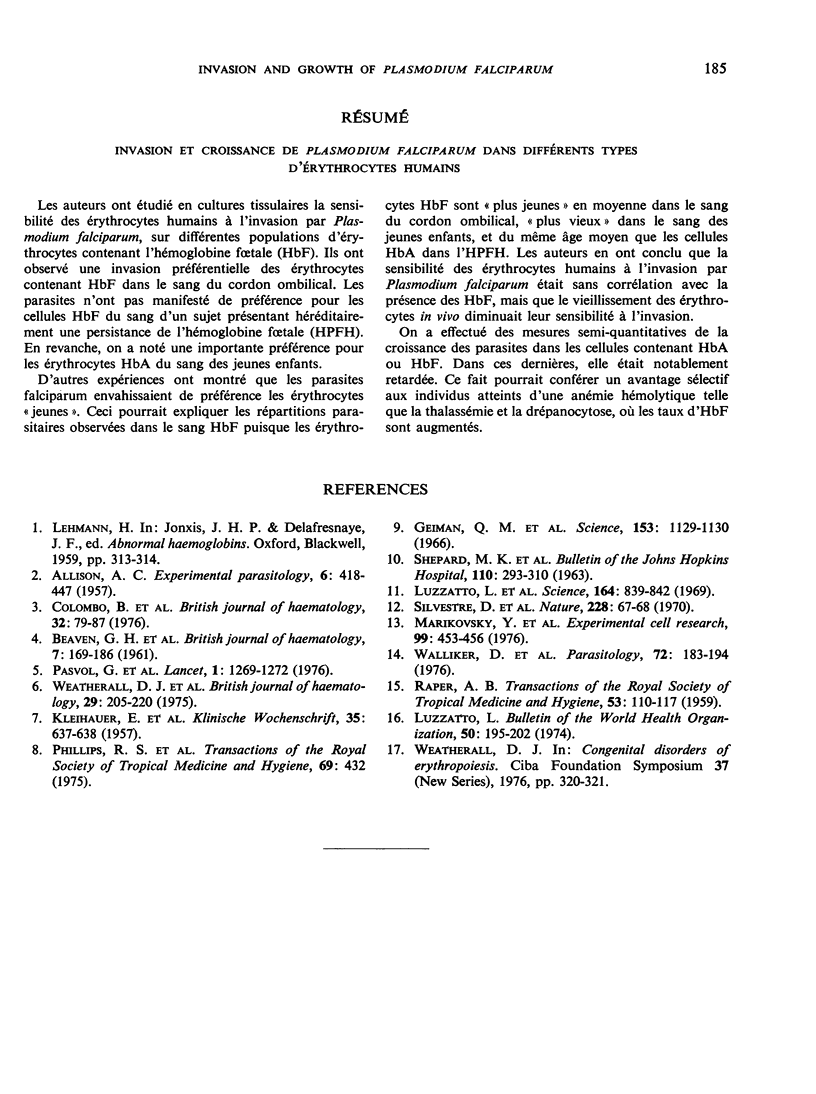
Selected References
These references are in PubMed. This may not be the complete list of references from this article.
- ALLISON A. C. Malaria in carriers of the sickle-cell trait and in newborn children. Exp Parasitol. 1957 Jul;6(4):418–447. doi: 10.1016/0014-4894(57)90032-2. [DOI] [PubMed] [Google Scholar]
- Geiman Q. M., Siddiqui W. A., Schnell J. V. Plasma replacement for in vitro culture of Plasmodium knowlesi. Science. 1966 Sep 2;153(3740):1129–1130. doi: 10.1126/science.153.3740.1129. [DOI] [PubMed] [Google Scholar]
- KLEIHAUER E., BRAUN H., BETKE K. Demonstration von fetalem Hämoglobin in den Erythrocyten eines Blutausstrichs. Klin Wochenschr. 1957 Jun 15;35(12):637–638. doi: 10.1007/BF01481043. [DOI] [PubMed] [Google Scholar]
- Luzzatto L., Usanga F. A., Reddy S. Glucose-6-phosphate dehydrogenase deficient red cells: resistance to infection by malarial parasites. Science. 1969 May 16;164(3881):839–842. doi: 10.1126/science.164.3881.839. [DOI] [PubMed] [Google Scholar]
- Marikovsky Y., Lotan R., Lis H., Sharon N., Danon D. Agglutination and labeling density of soybean agglutinin on young and old human red blood cells. Exp Cell Res. 1976 May;99(2):453–456. doi: 10.1016/0014-4827(76)90607-8. [DOI] [PubMed] [Google Scholar]
- Pasvol G., Weatherall D. J., Wilson R. J., Smith D. H., Gilles H. M. Fetal haemoglobin and malaria. Lancet. 1976 Jun 12;1(7972):1269–1272. doi: 10.1016/s0140-6736(76)91738-4. [DOI] [PubMed] [Google Scholar]
- SHEPARD M. K., WEATHERALL D. J., CONLEY C. L. Semi-quantitative estimation of the distribution of fetal hemoglobin in red cell populations. Bull Johns Hopkins Hosp. 1962 Jun;110:293–310. [PubMed] [Google Scholar]
- Silvestre D., Kourilsky F. M., Nicolai M. G., Levy J. P. Presence of HLA antigens on human reticulocytes as demonstrated by electron microscopy. Nature. 1970 Oct 3;228(5266):67–68. doi: 10.1038/228067a0. [DOI] [PubMed] [Google Scholar]
- Walliker D., Sanderson A., Yoeli M., Hargreaves B. J. A genetic investigation of virulence in a rodent malaria parasite. Parasitology. 1976 Apr;72(2):183–194. doi: 10.1017/s0031182000048484. [DOI] [PubMed] [Google Scholar]


